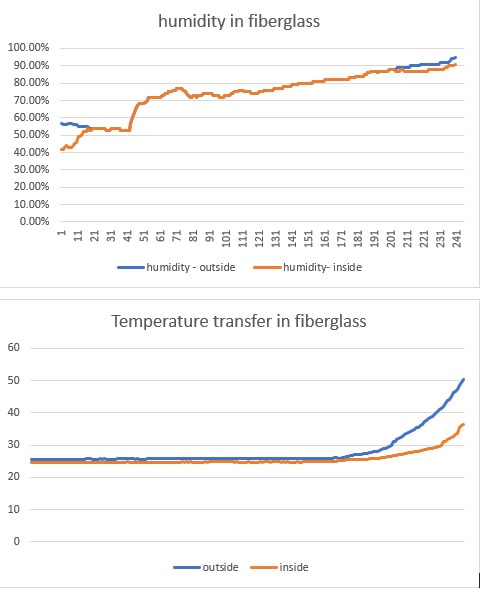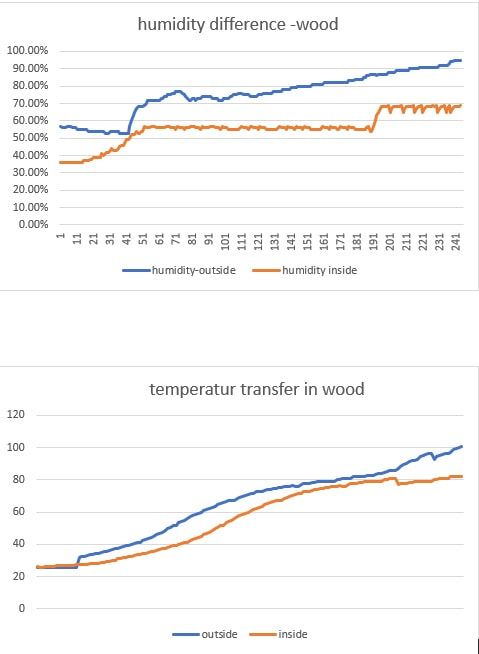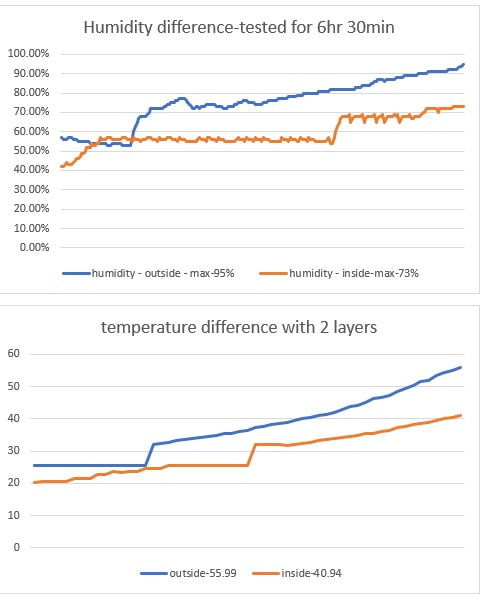Results
CONCLUSION & RESULTS
INITIAL TEST 1:
Initial testing with Fiberglass the humidity absorbed by the fiber glass is almost equal to the outer atmosphere and inner atmosphere as it has a least difference of 5%-10% and the temperature difference of 8-12 degrees.
INITIAL TEST 1:
Initial testing with Fiberglass the humidity absorbed by the fiber glass is almost equal to the outer atmosphere and inner atmosphere as it has a least difference of 5%-10% and the temperature difference of 8-12 degrees.


